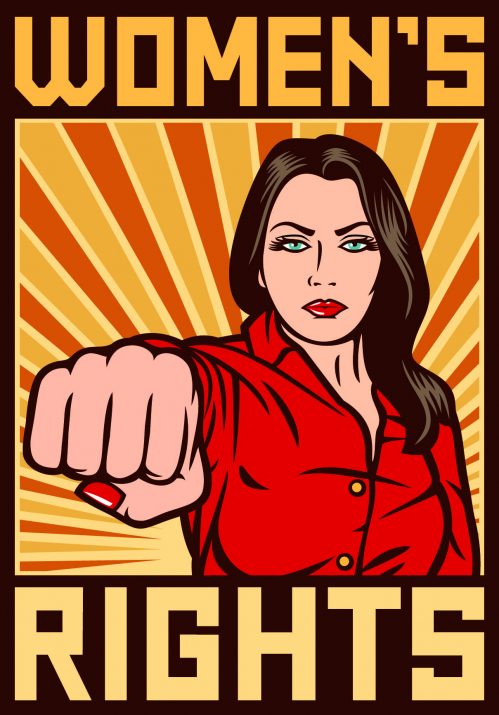
In the Philippines, human trafficking wasn’t a crime until 2003. But Filipino women made sure that changed.
They helped pass the anti-trafficking law so that perpetrators enslaving Filipinos would meet justice. Today, hundreds of traffickers have been convicted.
As strongmen consolidate power from Turkey to Russia, and India to the Philippines, women are on the frontlines of resistance for pluralism and human rights. They have been fighting with mass protests, social media, and voting. In some countries, laws for gender equity are being taken away and activists are simply trying to prevent the damage.
How do current women’s movements succeed as they confront governments that are normalizing rape culture and demonizing feminism?
Rights Universal spoke to women in Asia who have witnessed effective mobilization in women’s rights from the Philippines to India to Iran. Looking back at movements that succeeded may pave the way for activists at the forefront of women’s struggles now.
For Filipino women, the end of the Ferdinand Marcos’ 21-year dictatorship marked significant change in women’s fight for equality. Jean Enriquez, a veteran activist affiliated with the World March of Women, said Filipino women were working with men to end political tyranny until the fall of Marcos in 1986. It was only then that they could focus on their own struggles. It took another 15 years for them to lobby and push four major human rights legislations through to improve their lives.
Enriquez, who is also the executive director of the Asia Pacific’s Coalition Against Trafficking in Women, lobbied for the anti-trafficking law that protects Filipino women who are taken abroad for sexual exploitation or forced labor. At least 10 million Filipinos, about a tenth of the population, work outside of their country, supporting half of the households. But it’s not all legal.
“The law passed in 2003 set in the public mind that modern day slavery is unacceptable. It was publicly welcomed,” she said.
The Philippine government now meets international standards to eliminate trafficking but corruption weakens combating it, according to the US State Department.
Women’s rights activists seized the momentum among legislators’ support for the next decade. Policies against gender discrimination, violence against women and for reproductive healthcare became reality. Abortion remains illegal but if a woman has the procedure, she can legally get treatment afterwards.
The International Federation for Human Rights based in Paris show how women are mobilizing in 2017 across the world.
For a predominantly conservative, Catholic nation, it required open and sympathetic lawmakers who listened to research and scientific findings to pass the healthcare policy, Enriquez said. But it also took a decade.
To implement and gather public support, Filipino women’s groups reached out to community leaders in villages and urban areas. They conducted workshops with men.
“Once men understood that the laws aren’t against them, they agreed to support the women’s rights laws,” Enriquez said.
But with President Rodrigo Duterte in power, women are facing major setbacks. He’s jailing women lawmakers who are investigating the president’s alleged extrajudicial killings, and he’s condoned rape in public.
“Also during his campaign, he was kissing women on the lips without consent, encouraging men to womanize and rape. Under the violence against women act, it is a form of psychological violence what he has been preaching to men,” Enriquez said.
Women’s groups won a case against Duterte for inciting violence with the Philippine’s human rights commission. But the commission can’t prosecute the president. Filipino women aren’t surrendering. They want him suspended from office before he seizes their hard-earned achievements.
Success isn’t just measured in policy, said Kavita Krishnan, a leading feminist figure in India and secretary of the All India Progressive Women’s Association. Current movements that produced results in India began on the streets.
In 2016, Indian women garment workers in Bangalore were about to lose their pension rights. Krishnan said only a few of these women are educated and although they work, the factory workers don’t have much autonomy over their lives. But thousands united in disobedience, disrupting Bangalore streets and highways.
“There was no union and no leader. It was built up by women themselves,” Krishnan said.
“Instead of going to work that day, they just left and flooded out. They were blocking roads, and police came and beat them up, and they still fought back. It was a huge chaos and factories were panicking. The government immediately threw up their hands and said okay.”
The garment workers kept their pensions. In a cartoon, India’s Prime Minister Narendera Modi was hung up to dry. The message was that the factory workers had taken him to the cleaners, Krishnan said.
The brutal rape of Jyoti Singh in Delhi who died of her wounds propelled the feminist movement into the mainstream in 2012. Indian men and women apathetic to women’s rights began to advocate for them. A year later, a new law was passed that expanded the definition of rape, one that clarified consent, and recognized sexual assault such as stalking and acid attacks. That law still has problems — marital rape still isn’t recognized. But it was a giant step forward for Indian feminists.
“The important change or outcome that came after 2012 is respect for women’s autonomy. There was very little understanding previously,” Krishnan said. “There’s an increasing sense of owning public space.”
Previously, freedom was restricted in the name of women’s safety, public space didn’t belong to women without fear, but that’s changing. Social media has been a valuable tool with hashtags such as #WalkAlone in which young women demand to have a social life and equal access to public spaces. Some young men have joined the feminist movement as well.
“Young men speak up that we don’t want this kind of power,” Krishnan said. “There’s a lot of openness but more of them need to organize and talk to other men.”
Indian ads on TV have been making feminist statements. This one’s from a father’s perspective who sees how unfairly hard his daughter works while the men in the family relax.
Another country where more men are joining women’s movements is Iran, simply by voting for women legislators.
In parliamentary elections in 2016, Iranian activists campaigned hard for more women parliamentarians, said Holly Dagres, a commentator on Iran and curator of the Iranist newsletter. These activists developed a campaign called “Changing The Parliament’s Male Face.” It was a name and shame system that gave red cards to parliamentarians who don’t support women’s rights, Dagres said.
The campaign worked — women won 18 of 290 seats, the largest number of women members in Iranian parliament in the history of the Islamic Republic since 1979.
For educated, secular Iranian women, the Islamic Revolution was obviously a blow to progress. Basic divorce and property rights were seized. Women aren’t allowed to sing as lead performers on stage, dancing, riding bikes and showing their hair are all forbidden by the law.
But the revolution convinced religious families to send their daughters to school. These girls who were destined to become housewives have now graduated from university. The youth literacy rate doubled since 1979 to 98 percent.
But can the elected women legislators change laws to give Iranian women more power?
Dagres said the biggest hindrance to women’s empowerment is the Iranian government. “They see women’s rights as a national security threat. Many of the prominent activists have come under heat and ended up in prison,” she said.
Despite the threat of imprisonment, Iranian women defy the laws to assert their freedoms. They ride bikes, take off their headscarves and some even dance, then post it on social media.
In the Philippines, India and Iran, all countries with immense diversity in Asia, women continue to fight against misogyny. But the battles they have won along the way are lessons in effective mobilization.
Debbie Stothard, secretary general of the International Federation for Human Rights who works in Burma, said the idea of sisterhood often evolves into women’s rights.
“Women have been effective because they have empowered themselves to listen to each other and act together for change, often transcending physical, social and cultural barriers. I feel that warmth even when I enter a room of women activists that I haven’t met,” Stothard said.


